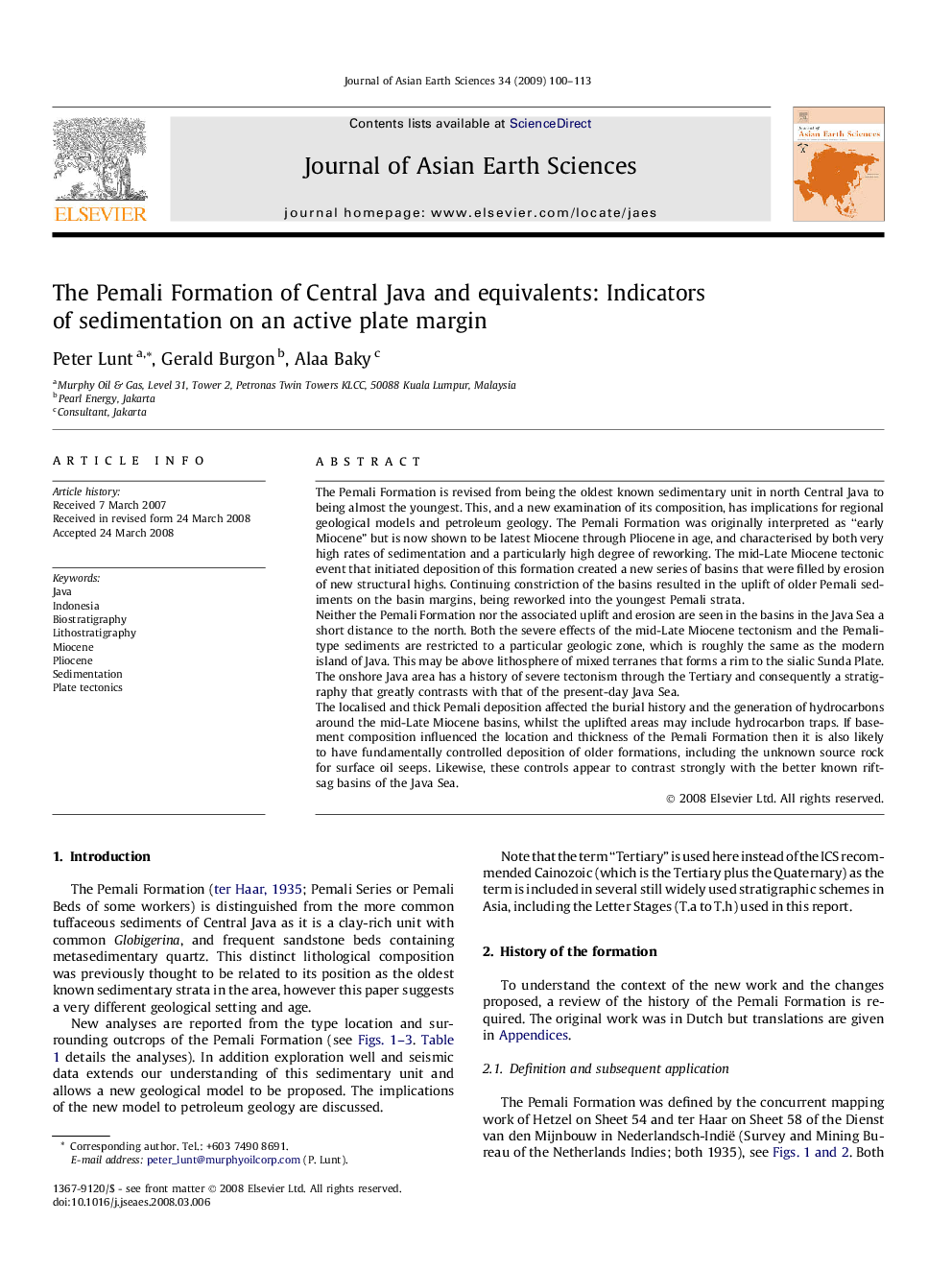| کد مقاله | کد نشریه | سال انتشار | مقاله انگلیسی | نسخه تمام متن |
|---|---|---|---|---|
| 4732223 | 1356850 | 2009 | 14 صفحه PDF | دانلود رایگان |

The Pemali Formation is revised from being the oldest known sedimentary unit in north Central Java to being almost the youngest. This, and a new examination of its composition, has implications for regional geological models and petroleum geology. The Pemali Formation was originally interpreted as “early Miocene” but is now shown to be latest Miocene through Pliocene in age, and characterised by both very high rates of sedimentation and a particularly high degree of reworking. The mid-Late Miocene tectonic event that initiated deposition of this formation created a new series of basins that were filled by erosion of new structural highs. Continuing constriction of the basins resulted in the uplift of older Pemali sediments on the basin margins, being reworked into the youngest Pemali strata.Neither the Pemali Formation nor the associated uplift and erosion are seen in the basins in the Java Sea a short distance to the north. Both the severe effects of the mid-Late Miocene tectonism and the Pemali-type sediments are restricted to a particular geologic zone, which is roughly the same as the modern island of Java. This may be above lithosphere of mixed terranes that forms a rim to the sialic Sunda Plate. The onshore Java area has a history of severe tectonism through the Tertiary and consequently a stratigraphy that greatly contrasts with that of the present-day Java Sea.The localised and thick Pemali deposition affected the burial history and the generation of hydrocarbons around the mid-Late Miocene basins, whilst the uplifted areas may include hydrocarbon traps. If basement composition influenced the location and thickness of the Pemali Formation then it is also likely to have fundamentally controlled deposition of older formations, including the unknown source rock for surface oil seeps. Likewise, these controls appear to contrast strongly with the better known rift-sag basins of the Java Sea.
Journal: Journal of Asian Earth Sciences - Volume 34, Issue 1, 5 January 2009, Pages 100–113